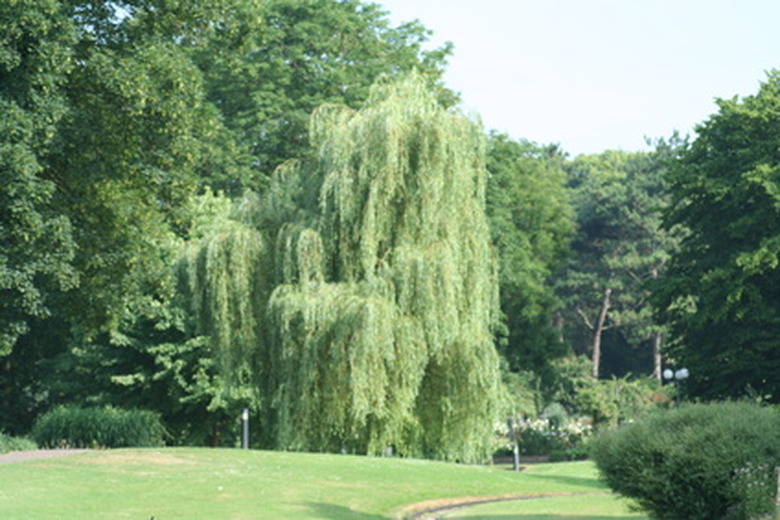Weeping Willow Planting Instructions
Things Needed
- Shovel
- Fertilizer
- Potting soil
- Mulch
- Water
Weeping willow trees add a graceful element to any landscape design. Weeping willows are fast growing trees with a mature height of between 30 and 40 feet with a 35-foot spread. These deciduous trees are dormant in the late fall and through the winter. Hardy in zones 6 through 8, weeping willow trees grow well when planted adjacent to water. A weeping willow planting site should have full sun and loose, good quality soil that drains well.
Step 1
Plant a weeping willow tree at least six weeks before the first frost in your area. This will give the tree time to become acclimated to its surroundings before becoming dormant.
- Weeping willow trees add a graceful element to any landscape design.
- Hardy in zones 6 through 8, weeping willow trees grow well when planted adjacent to water.
Step 2
Dig a hole twice as wide and twice as deep as the roots on the tree.
Step 3
Sprinkle a layer of 10-10-10 or 20-20-20 fertilizer in the bottom of the hole. Cover the layer of fertilizer with a layer of potting soil. The root collar of the weeping willow tree should be slightly above ground level. Backfill the hole with loose potting soil in order to elevate the root collar to the desired height.
Step 4
Center the weeping willow tree in the hole. Cover the roots completely with potting soil. Air pockets around the roots will cause the tree to dry out.
- Dig a hole twice as wide and twice as deep as the roots on the tree.
- Sprinkle a layer of 10-10-10 or 20-20-20 fertilizer in the bottom of the hole.
Step 5
Fill the hole with a mixture of potting soil and the excavated soil. Tamp the soil down around the tree and then add more soil to fill in any depressed area. Make sure the base of the stem is not covered with soil.
Step 6
Cover the planting area with a 2-inch layer of organic mulch. Do not cover the stem.
Step 7
Water the weeping willow well after planting. If your area experiences a dry winter, water the tree well once each week.
- Fill the hole with a mixture of potting soil and the excavated soil.
Step 8
Fertilizer is not necessary until the spring. Use organic fertilizer that's high in nitrogen on the soil around the tree.
Step 9
Keep grass and weeds at least 3 feet away from the tree during the first year.
